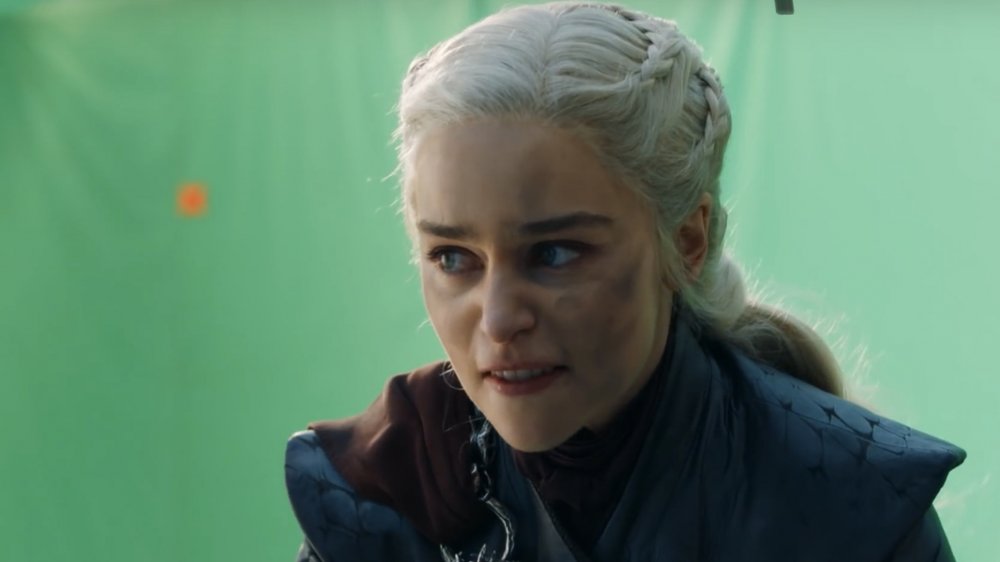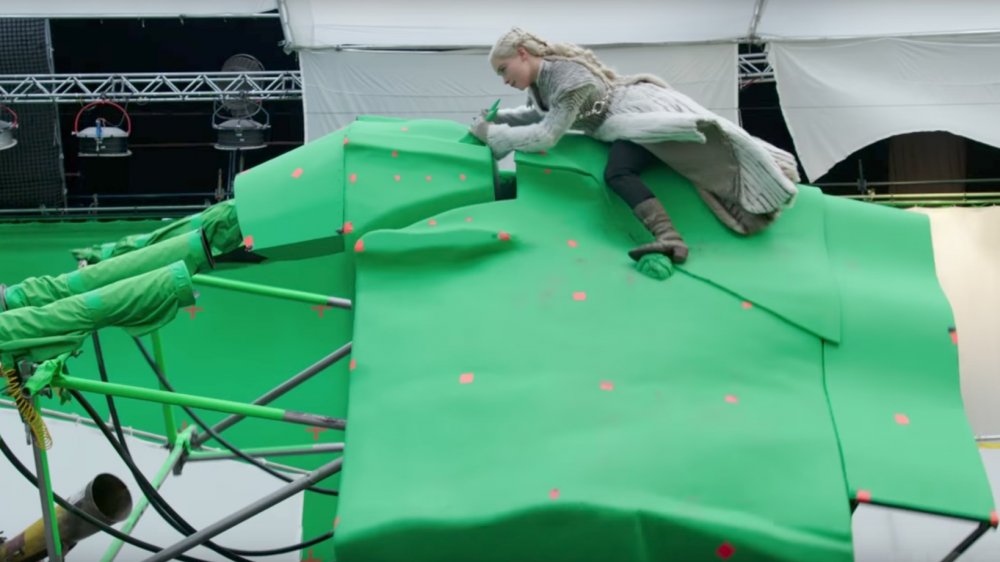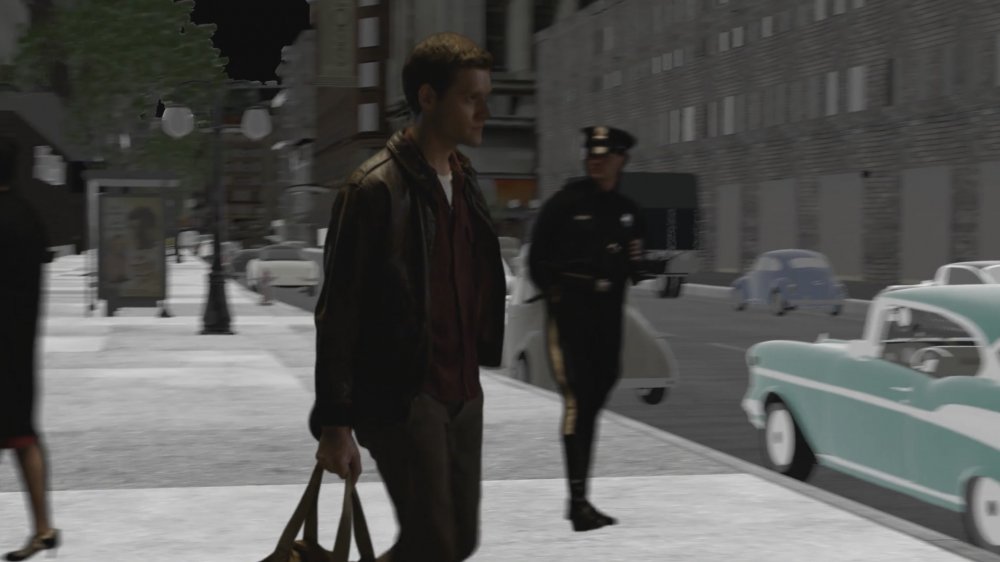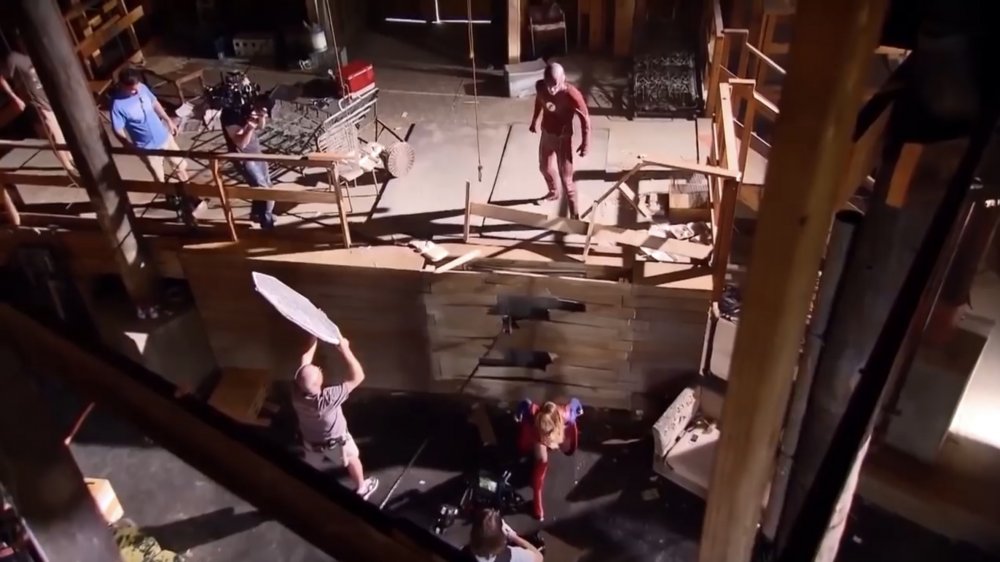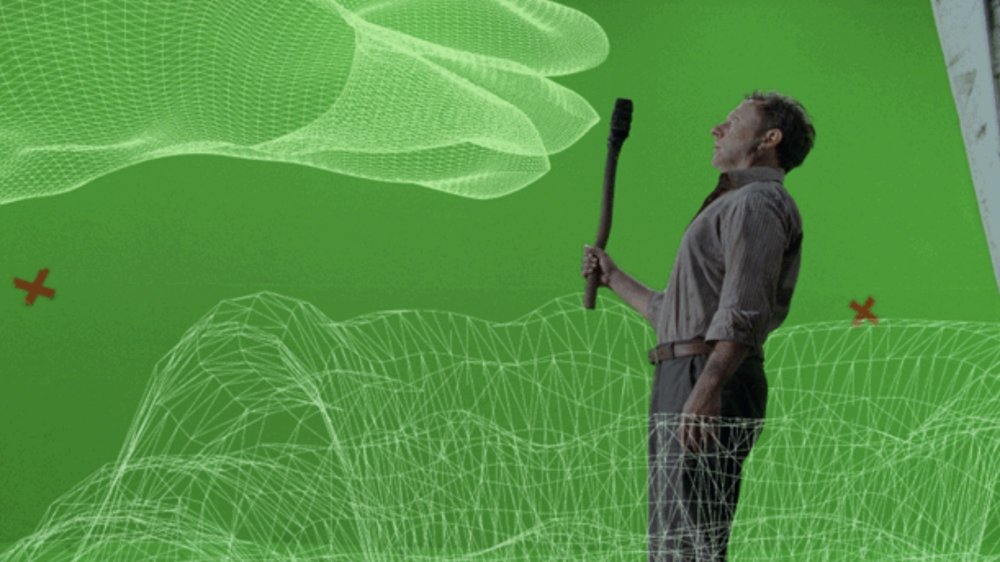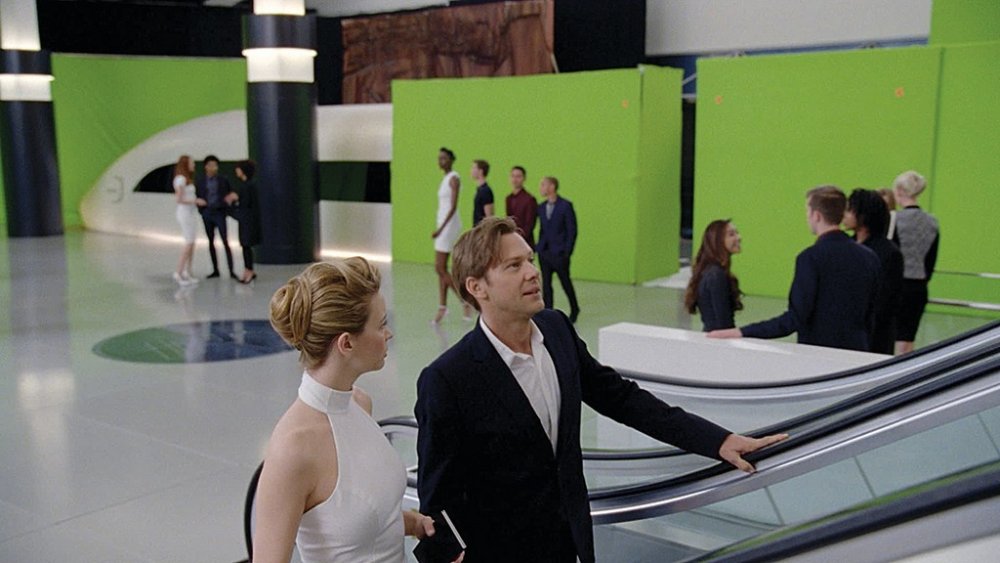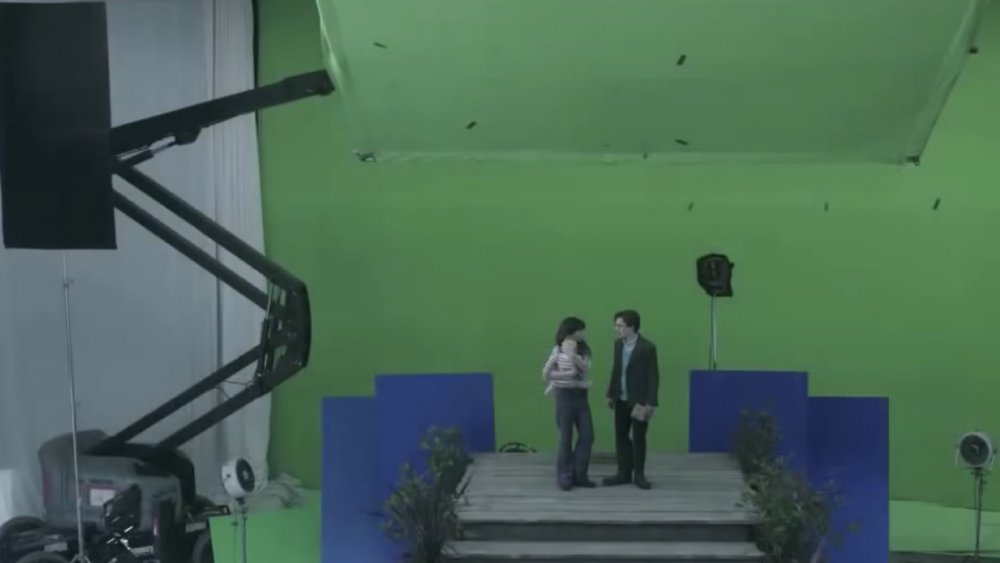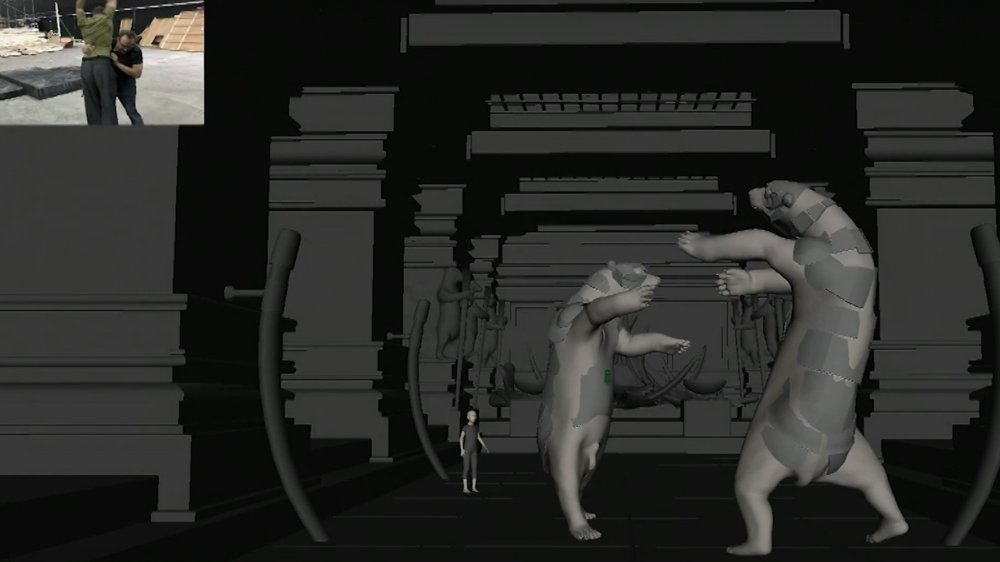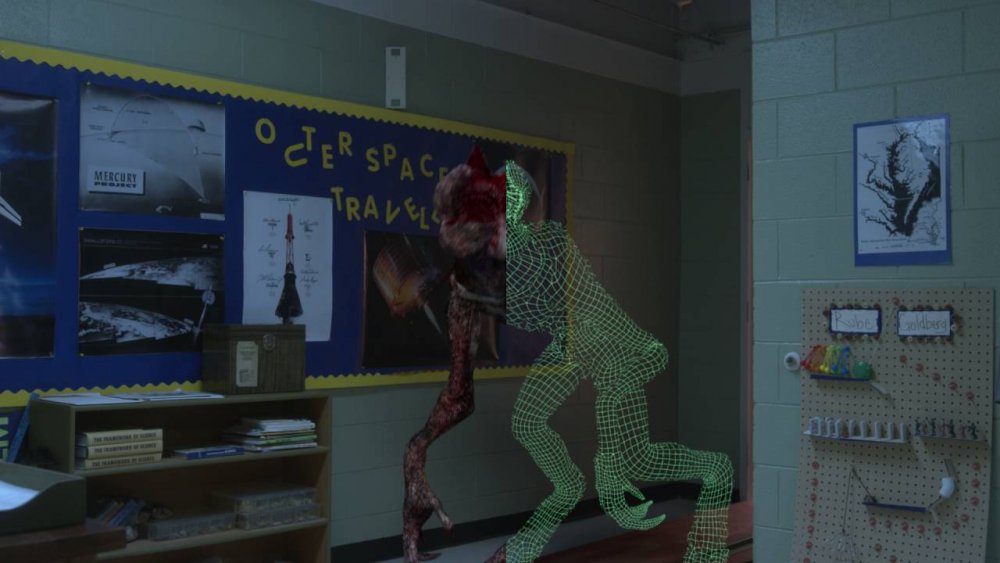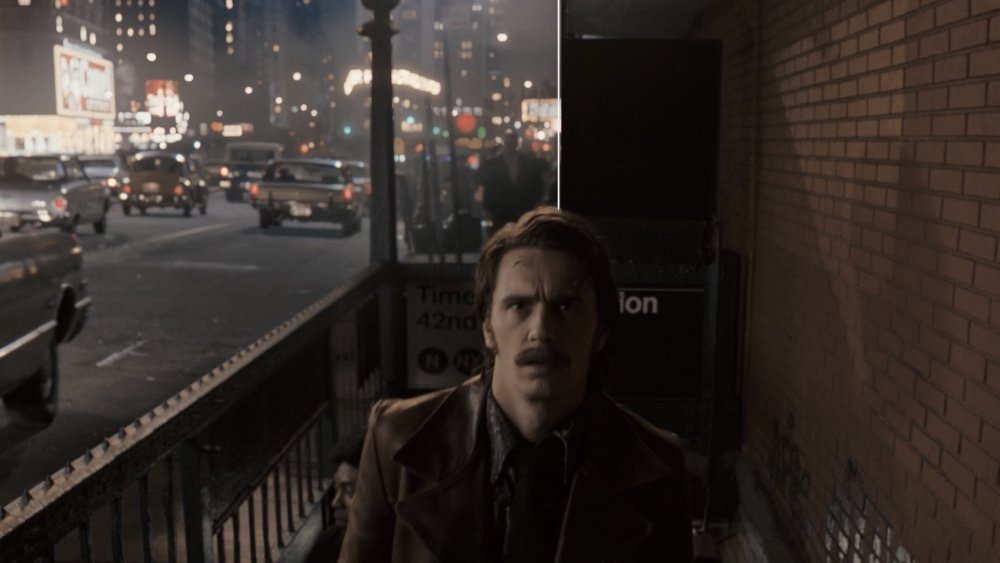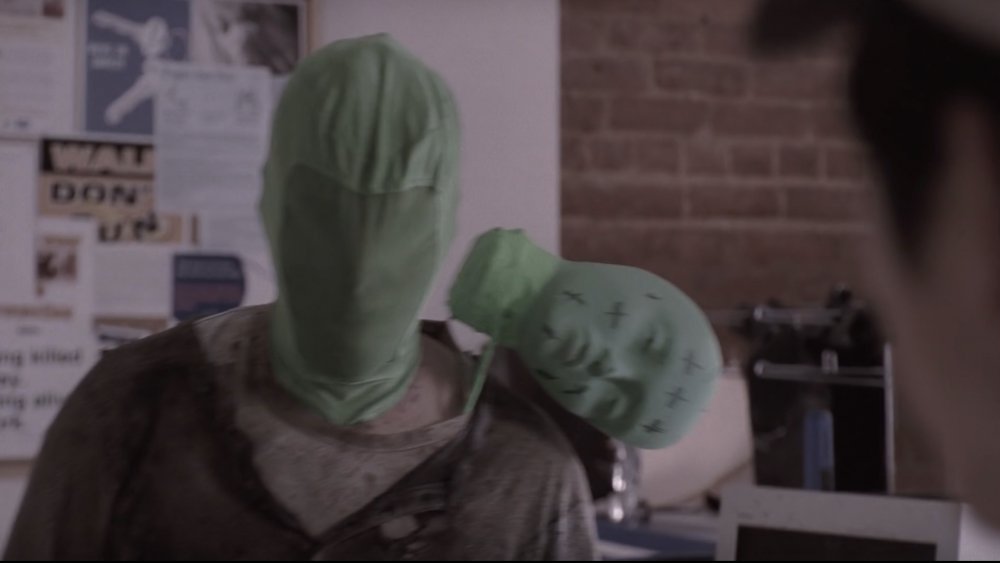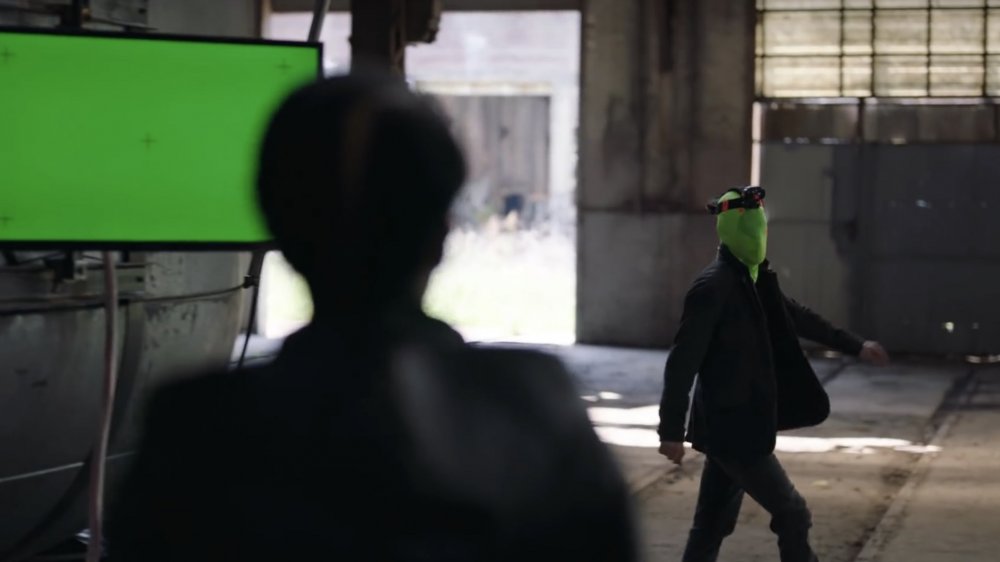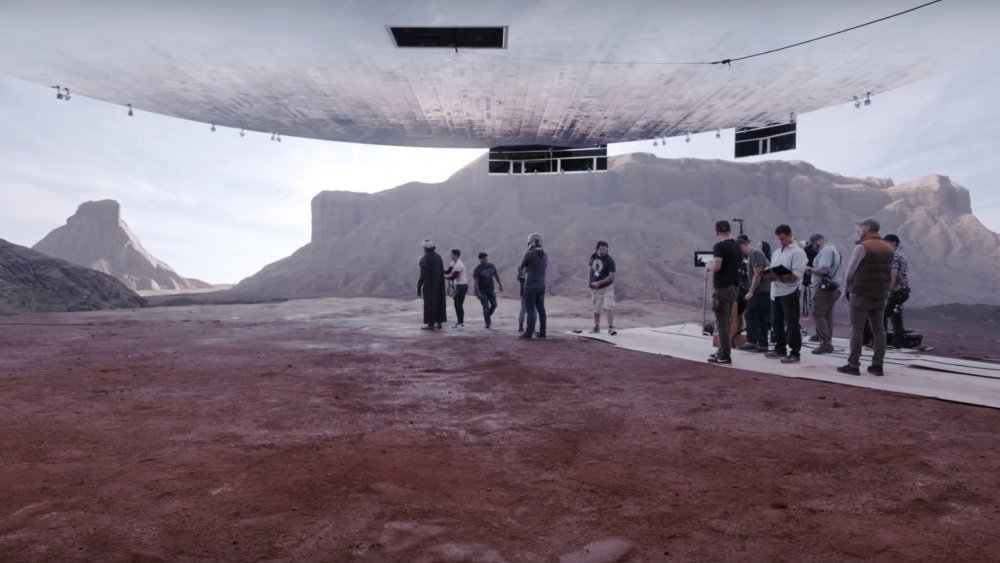What These Popular TV Shows Look Like Without CGI
It's impossible to watch Game of Thrones' Daenerys Targaryen convincingly annihilate a sprawling medieval city from atop a dragon and not wonder how it was done. Is it some clever mix of practical and digital effects, like Peter Jackson's Lord of the Rings trilogy? Or did they just set up some green screens and hand a big check to a visual effects studio, like Peter Jackson's Hobbit trilogy? Do you even want to know, or would that ruin the trick?
Since even "prestige" shows like Game of Thrones still have smaller budgets than movies, studios have to get creative with their computer-generated imagery (CGI) to impress audiences. But not every show is nearly so impressive, and those are often the true behind-the-scenes gems.
It's easy to forget, but the actors on your favorite series are often looking at something completely different from the final product when they're filming on the set. With that in mind, here's a peek behind the curtain at the effects of some of TV's most popular shows.
No, seriously, is that a real dragon?
No one is prouder of their special effects than the team behind HBO's Game of Thrones. The show's aesthetic set wild new standards for how TV can look thanks to its mix of impeccable practical design (costumes, sets, pyrotechnics and more) and photorealistic CGI effects.
That scene of Daenerys torching the city of King's Landing, for example, is staggering in its complexity.The crew built a small city and outfitted it with explosives, real fire and ash to rain down on armies of actors fleeing Daenerys' wrath. CGI was used to add details like the shadow of the dragon soaring overheard to reinforce the sense of danger. When we switch to Daenerys's godlike perspective, though, we're seeing a composite of aerial shots of where CGI smoke and destruction enhances the look of the city. For Daenerys herself, Clarke channels true rage as she... rides a mechanical bull in front of a green screen.
Another show might fail to pull off that kind of scene. Their effects might end up looking cheap or their actors might struggle to give a convincing performance. But Game of Thrones proved itself time and time again with stunning sequences like the Loot Train attack that only become more impressive when you learn how they were actually done.
The Man in the High Castle takes you to another dimension
When you're going up against shows like Game of Thrones, it's no longer enough for a production like The Man in the High Castle to throw its actors into some period-appropriate costumes and call it a day. You want to feel like you're really in Nazi-occupied New York City in the '60s. You want to be able to imagine walking those streets yourself. You want to be swept away in another reality. Luckily, The Man in the High Castle does exactly that.
From the jump, the show sells its chilling vision of New York. The city's most iconic lights, sound and action are all twisted by Nazi propaganda. Classic Leave It to Beaver-style Americana imagery clashes violently against myriad swastikas and "heil Hitler" salutes. It's unnerving. It's also amazing.
In this clip, special effects transform an ugly parking lot into a lively street buzzing with classic cars and architecture. We watch protagonist Joe Blake (Luke Kleintank) walk through a nightmarish version of Times Square, then watch as each layer is peeled back to reveal the truth of how it's made. Buildings, flags, signs: all computer generated to give the show its authentic look, and it works.
Supergirl and the Flash are really trying, OK?
The CW's lineup of DC Comics-derived superhero shows regularly manages to top lists of TV's both best and worst CGI effects, and it's easy to see why from this 2017 behind-the-scenes footage from Supergirl. Nothing kills the illusion of superpowers quite like watching Supergirl (Melissa Benoist) hyperventilate at the camera while the Flash (Grant Gustin) wildly flails his arms like a ceiling fan. What really elevates this clip though is the laughably underwhelming sound of it all over the silence on set.
Of course, once the show's visual effects artists do their thing, the scene looks pretty good, actually. Gustin's hilarious tornado arms are hidden by digital tornadoes. Benoist's breath transforms into a powerful blast of wind, and her funny little hop at the end becomes a dramatic launch into flight.
It's one thing to watch Mark Ruffalo hulk over everyone in a motion capture suit in The Avengers: Infinity War. It's wholly different watching the sausage get made on a much smaller-budget show like Supergirl. Diehard fans have defended the show's inconsistent special effects over the years, but as evidenced by the reaction to this terrible clip from last year's fifth season, even they have a breaking point.
Some effects get 'Lost' in translation
When Lost debuted on ABC in 2004, nobody had ever seen anything quite like it. Its two-part pilot episode hit viewers hard by taking us inside a terrifying plane crash and ending with a polar bear on a tropical island, all believably rendered with (for the time) cutting-edge special effects.
Though Lost won multiple awards for its masterful visual effects, eventually the show's imagination outpaced its artists. Fans criticized the worst effects, like the infamous submarine shot from the fifth season, but were still awed at the island's aesthetic. Adam Avitabile, visual effects supervisor on season six, told Art of VFX that the team opted for 2D matte paintings to add landmarks like the Tower or the Black Rock ship.
Avitabile mentions losing sleep over designing Lost's Smoke Monster, a sentiment echoed by Mitch Suskin, visual effects supervisor on season five. Every blade of grass needed to be accounted for if the effect was to work. "It's about paying enough attention to detail to sell the fact that he's there," Suskin told Animation World Network. "There's really no magic or high-tech [way] to solve this problem."
A Westworld like no other
HBO's Westworld is known for its labyrinthian plot and jaw-dropping special effects. The show simply wouldn't work if you didn't get every bit as lost in its fantasy park as its "guests" do.
"Our take was, it had to feel more real than real," co-creator Jonathan Nolan told VFX Voice. "There can't be any sense that it's an illusion, because that's what the guests are paying a lot of money for."
While onscreen we see only the final version of Nolan's vision, production photos from HBO tell the whole story. For instance, this beautiful shot of rampaging mechanical bulls was a massive effort for the team, requiring a robotically-controlled camera dolly to film live bulls. Yes, live bulls. The team then layered on special effects to expose the bull's endoskeleton and composite shots to add in the actors.
Important Looking Pirates, the studio behind the first season, also released a visual effects breakdown demonstrating how the show was able to de-age Anthony Hopkins, create eerie robots, and fill in landscape shots to build out the world.
A Series of Unfortunate Events brings down the house
Not every show shoots for photorealism. Take Netflix's 2017 adaptation of Lemony Snicket's A Series of Unfortunate Events, for example. The show's effects would never be able to compete with the likes of Westworld or Game of Thrones, so the creators smartly decided on a different approach. They opted instead for a grounded world filled with over-the-top flourishes that works well with the dark-yet-whimsical tone of the source material.
Mostly practical sets like Uncle Monty's Reptile Room and the Lucky Smells Lumber Mill get subtle CGI enhancements that define their unique style, but those mark the show's best use of CGI. Not everything stands up to such scrutiny.
For instance, a fantastical scene like Aunt Josephine's house breaking apart feels like watching children react to a green screen — because that's exactly what it is. Similarly, the show's CGI version of baby Sunny (Presley Smith) looks more like the dancing baby meme from the '90s than an actual human.
His Dark Materials bears witness to amazing CGI
HBO is banking on shows like His Dark Materials to replace Game of Thrones as the next watercooler obsession, and you know what that means: we get to watch two grown men pretend to be polar bears and fight each other.
One of those men is Russell Dodgson, the show's senior visual effects supervisor. Dodgson described to BBC how a scene like the polar bear fight comes together. First, he and a stuntman studied how bears move and grapple, then had the team film them take a stab at initial fight choreography. From there, they handed the footage off to their animation studio to model the bear's movements while another studio built a virtual set in video game engine Unreal to map out camera movements. Finally, the team used augmented reality to film both virtual and puppet bears fighting live on their actual set. That's wild.
Dodgson also explains how creature puppets were used extensively to immerse actors in each scene, with CGI effects and animation layered on in post-production. "That's where the skill of our animators comes in and their ability to understand where the visual effects are there to support the story, support the narrative and support the performance," said Dodgson, "and not be the point of the shot and the point of the show."
Stranger Things' effects turn us upside down
Netflix's acclaimed Stranger Things has long been praised for its stunning special effects. The show's aesthetic manages to harken back to classic horror movies like Alien and The Thing without feeling dated. Like many other shows on this list, Stranger Things combines meticulous practical effects with CGI to incredible effect.
It's fascinating to see how the show is able to mix that older style of costume design with modern enhancements to give its monsters a timeless feel. The first season's Demogorgon, for instance, is literally a guy in a suit wearing green gloves for digital removal later. By the third season's Mindflayer, though, the monster design couldn't be achieved with monster suits. Instead, the team had a motion capture artist crash through the scene as reference for the digital model later.
For the show's "Upside Down" world, the team layered creepy CGI effects over existing environments. But some sets, like the Byers house that shifts its state repeatedly, were built with easily removable walls to make the transitions easier.
The Deuce recreates a seedier Times Square
New York City's Times Square wasn't always the tourist trap and corporate playground it is today. Just a few decades ago, Times Square was rife with porn, prostitution and crime. Tourists don't have to deal with that these days, which is why HBO masterfully recreated this era in its period drama, The Deuce, using fantastic costume design and extensive CGI.
It's shocking to see that to accomplish the show's look, visual effect studio Phosphene wholesale replaced entire skyscrapers, signs and more. In a stunning before and after video, star James Franco exits a subway station as the entire city behind him travels decades into the past. Shots like that can be costly, so most scenes in The Deuce take place indoors on sets just as detailed and vibrant as those in the streets.
The Walking Dead's CGI is killer
If there's one thing The Walking Dead gets right with its effects, it's scale. The show loves to pit its characters against hordes of hundreds or even thousands of shambling, rotting zombies. Viewers are left to wonder whether the show employs a veritable army of extras and makeup artists or if there's a little CGI magic happening. Turns out there's a lot of CGI magic.
The Walking Dead has employed a few visual effects studios, and each has been more than happy to show all the gory details. Stargate Studios, which worked on earlier seasons before moving to spinoff Fear the Walking Dead, created post-apocalyptic cities from composite shots and massive zombie hordes using motion capture. Goodbye Kansas Studios, which took over after Stargate, put its bigger budget to good use: more zombies, more explosions, more gore.
Though it might be disenchanting to watch CGI zombie mobs suddenly appear in what are otherwise pleasant nature shots, the show still impresses with the more intimate encounters. Zombies are lovingly detailed, relying only on techniques like the green mask pictured above when necessary.
Watchmen is out of this world
If you haven't noticed by now, HBO ran away with this list. Shows like Watchmen make it clear why. Like HBO's other shows, Watchmen's effects craft a fully realized world; every poster, street sign, and even litter tells a story about what happened. There are no extraneous details here, and that's largely to the credit of the visual effects team.
Characters like Looking Glass (Tim Blake Nelson), who wears a mirrored mask, are made possible through CGI. Nelson wore a green mask while filming his scenes so the mirrored effect could be added later. It looks a little silly here, of course, but it's the only way to reflect the light around him and provide a visual callback to the source material's Rorschach character.
Some scenes in Watchmen are entirely CGI, like the aerial shot of a destroyed Manhattan, which does take away some of the magic. Still, scenes like the show's take on the Tulsa race massacre of 1921, which combines practical and digital effects, still manage to dazzle.
The Mandalorian's effects bring balance to the Force
No series has more controversy around its use of CGI than Star Wars. While the original trilogy relied on practical effects, the subsequent prequel trilogy infamously abandoned that philosophy in favor of green screens everywhere. The Mandalorian combines the best elements from both to create a look that features cutting edge effects while still feeling like Star Wars.
The show accomplishes this by once again relying mostly on practical effects, set designs and costumes. As a result, there aren't as many revelations when you see behind the scenes footage, setting it apart from most entries on this list.
The effects the show does use are quite sophisticated, though. Another behind the scenes video shows off how CGI allowed the team to modify the landscape as they saw fit, moving mountains and creating "a 10-hour dawn." They also built brilliant mechanisms like a projected rock wall that can be manipulated instantly for the desired effect.
